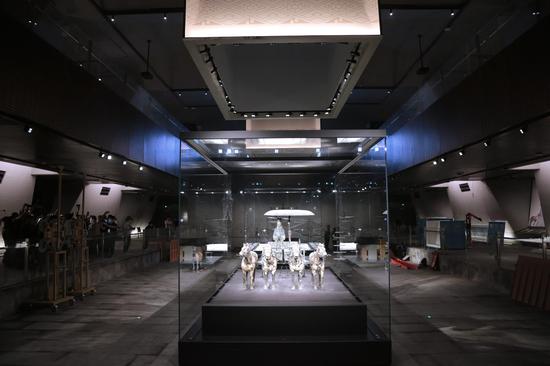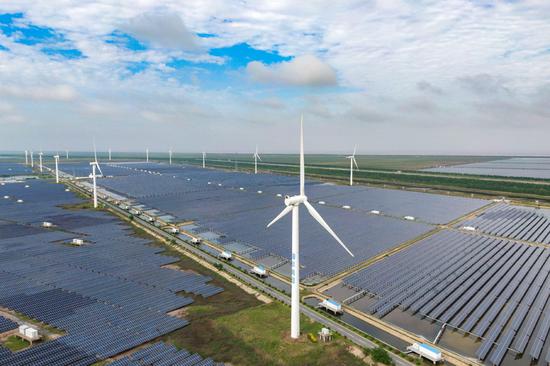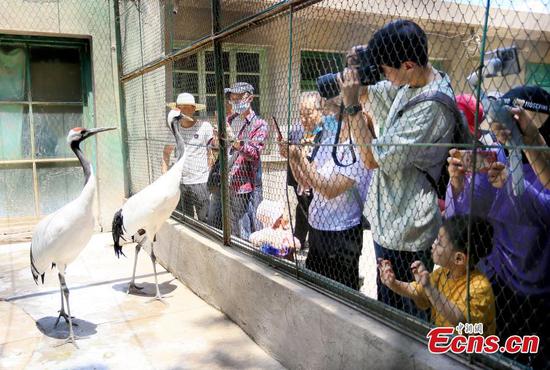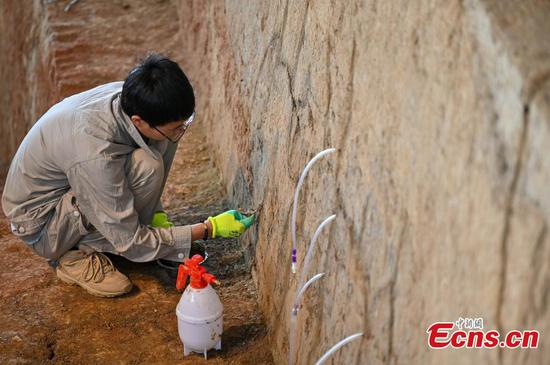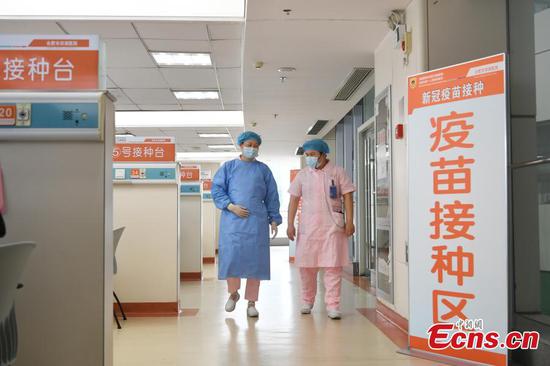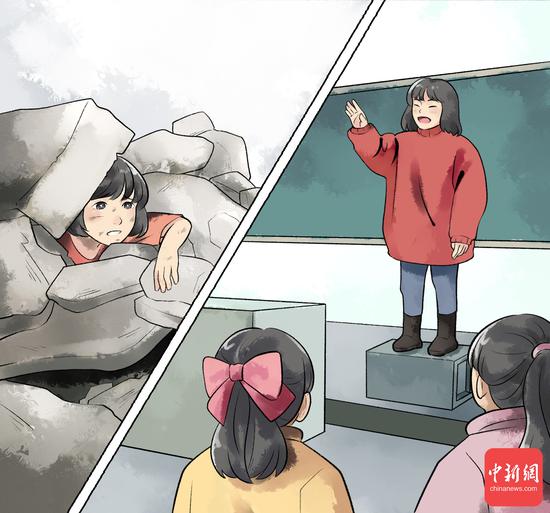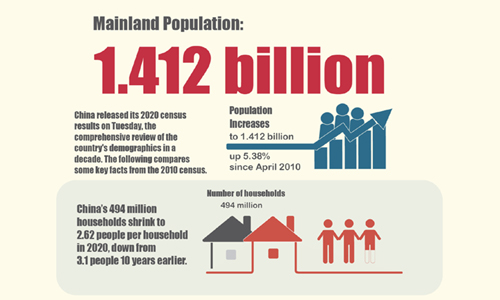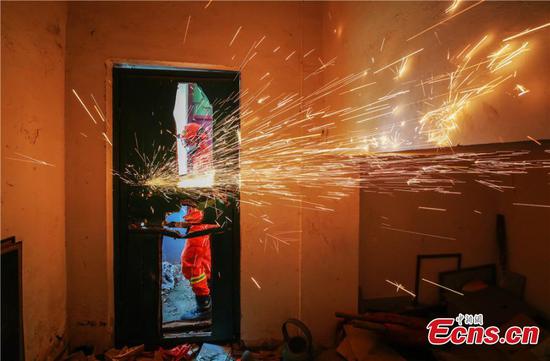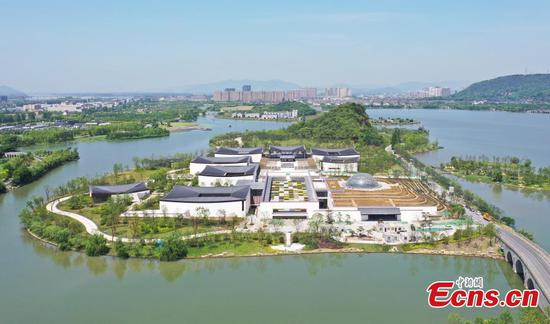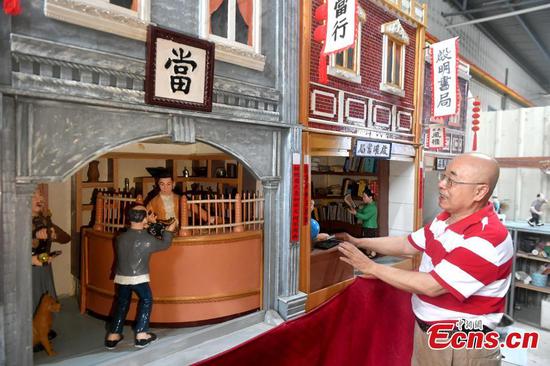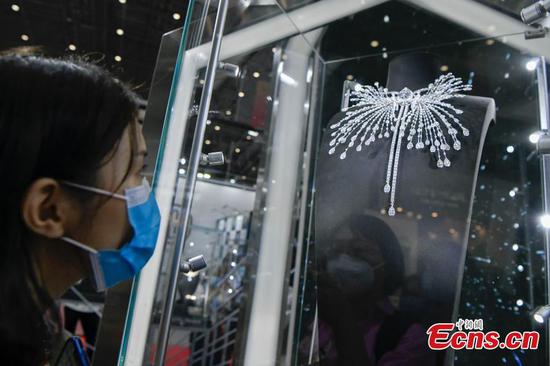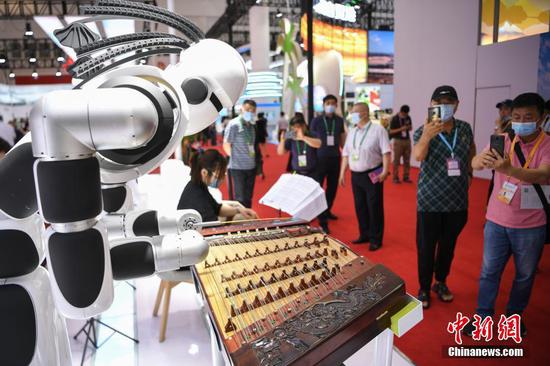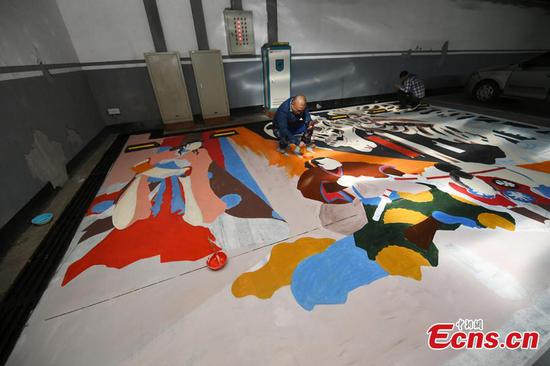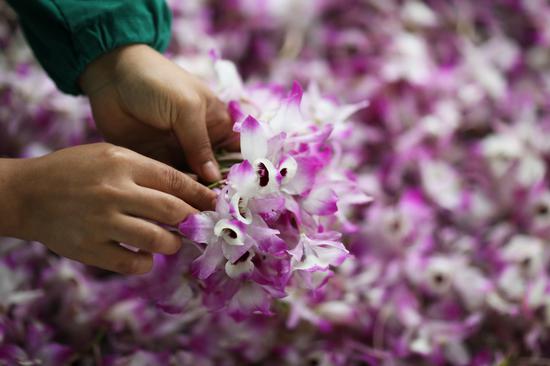Vegetable growers in Shouguang, Shandong province, are now finding it easier to grow vegetables in greenhouses, thanks to the rapid development of technology and infrastructure.
In a greenhouse in Cuilingxi village, Shouguang, dozens of strings attached to a greenhouse roof begin to move as Cui Jiangyuan clicks a ventilation button on his smartphone. The roof then rises to let in fresh air.
Cui, in his 50s, has been growing vegetables in greenhouses for over two decades. He said he regards his smartphone as a "new agricultural tool" that is very efficient and helpful.
Covering 1,600 square meters, the greenhouse also features smart devices including automatic equipment to adjust sunshine, water and fertilizer levels in an all-in-one machine.
"It's not necessary for me to come to my greenhouse every day. I can manage the greenhouse on my phone," he said.
But years ago when he was still tending to an old greenhouse, he had to go to his greenhouse several times a day to monitor temperatures.
But now he sets temperatures using his handset. When the temperature in the greenhouse creeps above the designated temperature, the ventilation device will start working to pull open the cover over the greenhouse and heating devices will kick in if the ambient temperature is too low.
Since the first batch of greenhouses were built in 1989, Shouguang's vegetable growing sector has burgeoned, gaining it nationwide recognition as the country's major vegetable production and trade base.
Over the past three decades, growers have been updating greenhouses to better use the land and increase output, resulting in higher profits.
Like Cui's greenhouse, greenhouses equipped with smart systems based on the internet of things and big data account for 80 percent of the total number of greenhouses in Shouguang, according to the city government. The city now has 173,000 greenhouses, producing 4.5 million metric tons of vegetables annually.
Agricultural organizations including the Chinese Academy of Agricultural Sciences, Chinese Academy of Sciences and the National Research Center for Information Technology in Agriculture are building new greenhouses in the city with state-of-the-art agricultural technologies on a trial basis.
At the demonstration base of modern agricultural technologies located at the city's Zhaili village, a smart glass greenhouse with tomatoes features over 120 patented technologies developed by a team from the Chinese Academy of Engineering.
A series of data on humidity, temperature and carbon dioxide concentration are updated on a large electronic screen in the glass greenhouse.
"Information on water, fertilizer, sunlight and heat is collected by sensors and uploaded to a platform where the information is analyzed and provided to smart equipment. Based on the analysis, accurate supplies of water and fertilizer will be distributed to the vegetables by the automatic irrigation system," said Ma Fangyuan, a staff member at the demonstration base.
A total of 22 robots are working in the greenhouse to help identify diseases, spray pesticides and transport goods. Technicians are also conducting experiments with robots that can pick tomatoes.
With air-source heat pumps and facilities to collect heat, the greenhouse has solved the problem of traditional greenhouses consuming large amounts of energy in winter.
"Some of the newly-developed technologies have been promoted to be used by farmers," Ma said.
Seedling cultivation has always been a crucial link in vegetable growing and new seed development. "With smart measures, the number of seedlings that survive has been increasing," said Liu Ligong, a technician with the Shouguang agricultural development group.
"Before, we irrigated seedlings from above, but now we irrigate seedlings from below," he said.
With pipes laid through seedling cultivation bases and the smart control systems, water and fertilizer can be supplied according to seedling requirements.
Liu used to spend hours monitoring water and fertilizer, adjusting temperature and lighting, and disinfecting. "Now most of the work is done by the smart facilities," he said, adding that he can take care of seedlings in several greenhouses in one day now.
"Smart facilities are really helpful," Liu said.










